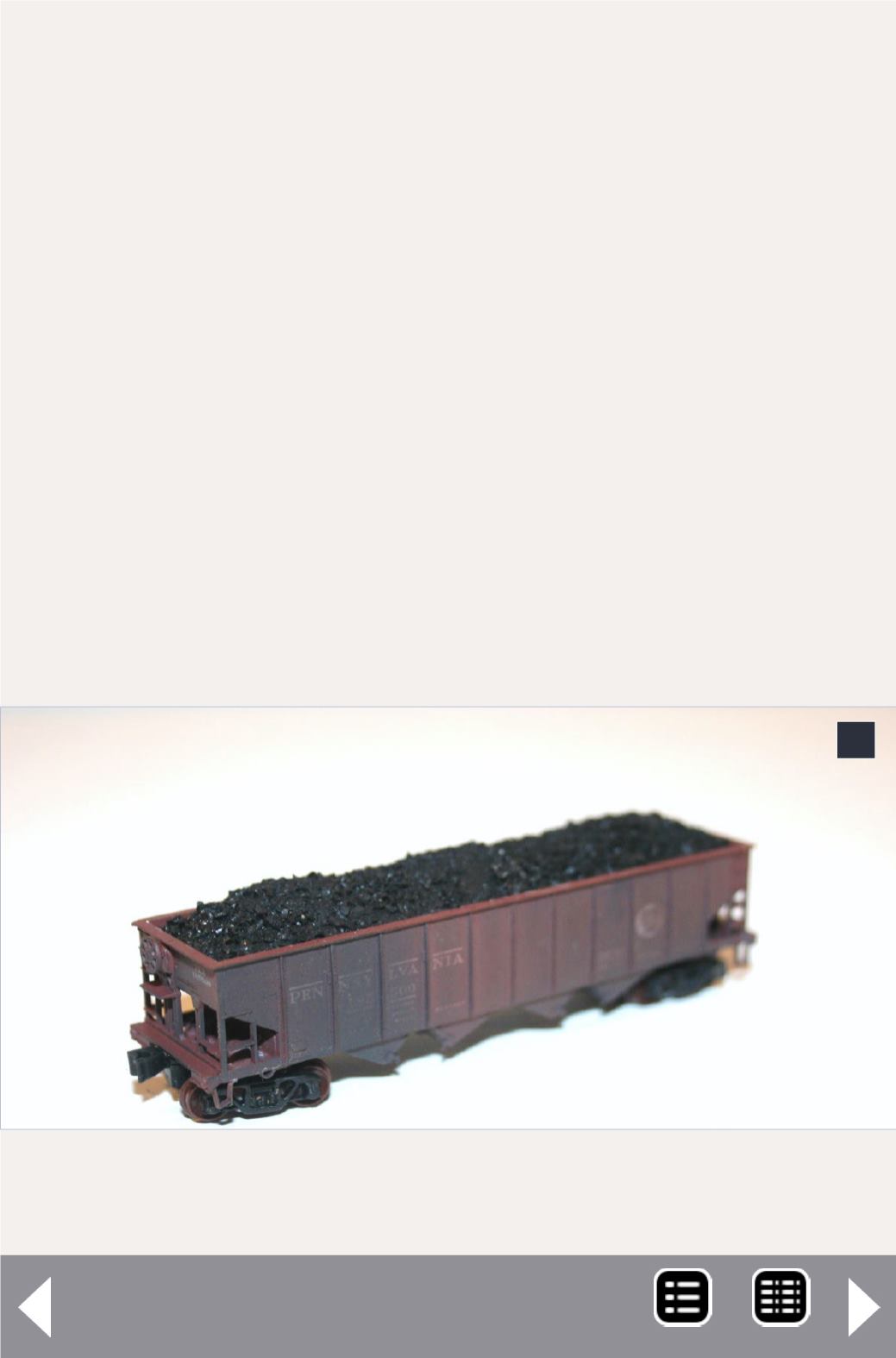
(sizes) creates the remarkable variety of loads often seen in
1950s photos. Wait for the glue to dry. Remove any excess on
the sides of the loads and add a little more glue and coal to the
bare spots.
Empty hoppers are rarely completely empty. A scattering of
coal in the bottom of the hoppers can be achieved with white
glue and scale coal, just as with the loads.
Some of the models include the interior bracing common in
early steel hopper cars. The bracing can easily be added to oth-
ers using plastic shapes. The PRR four-bay hoppers often had
internal cross-braces about halfway up the inside of the car. The
particular cross-section is hard to match, but can be represented
by a thin I-beam shape. Some of these cars also had triangular
gussets reinforcing the joint between the bottom and the sides
of the hoppers. These can be cut from thin sheet styrene.
Other cars had a modification that is visible whether the car is
empty or loaded. During the 1930s, a rebuild program added
5: A little scale coal improves the look of factory plastic
coal inserts
5


